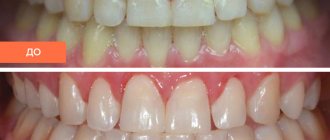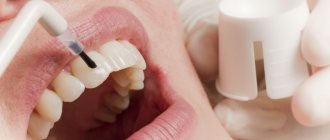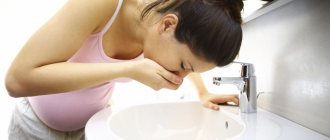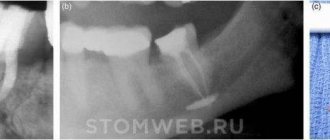Many dental diseases are associated with the appearance and spread of pathogenic bacteria in the human oral cavity. Most of them cannot be removed on your own, even with careful and proper brushing of your teeth. People with a strong immune system may not be bothered by bacteria for a long time, but the risk of developing caries, stomatitis and other unpleasant diseases is still high. Therefore, professional oral hygiene is a necessary procedure for everyone who cares about dental health. At the InWhite Medical clinic, it is performed carefully, carefully and at an affordable cost; in addition, we often hold promotions for oral hygiene.
Hygiene = whitening?!
So much has already been said about the importance of maintaining oral hygiene.
However, patients are still wary of this procedure. Is it really that important?! Professional cleaning is one of the most important oral care procedures! Its colossal role is in the prevention of many diseases not only of teeth, but also of gums!
What is adaptive teeth cleaning? Why is it needed?
Adaptive cleaning is a method of getting a small patient accustomed to dental procedures according to the principle “from simple to complex.” First, the child meets the doctor, and the doctor tries to gain the child’s trust. The doctor very carefully, in a playful way, lets the child feel how the brush “buzzes”, helps him get used to the sensations of dental instruments in the mouth, the taste of the toothpaste, and the water. In addition, during adaptation cleanings we teach parents how to care for their child’s teeth at home.
Teeth cleaning and whitening
Many people think that after brushing their teeth will become several shades lighter, but this is not true. Cleaning and whitening are completely different procedures.
The first is aimed at removing plaque, including pigmented plaque, cleaning all surfaces of teeth, and polishing them. After this manipulation, the teeth do look lighter, but only by 1-2 shades. But whitening can dramatically change the color of your smile due to various types of effects on tooth enamel. Thus, it becomes 8 or even 10 shades lighter, and this is a very noticeable difference.
What kind of plaque is there and why is regular teeth brushing not enough?
Soft plaque on teeth is divided into two main types - colorless and colored.
Colorless plaque appears, as a rule, when the oral apparatus is at rest, that is, at night during sleep or in between meals. It is quite easy to clean off with a regular toothbrush; it does not deposit in the spaces between the teeth, but if it is not removed in a timely manner, it can create an unpleasant putrid odor and taste.
Colored plaque is much more dangerous; it is from this that tartar subsequently appears. This is an ordinary plaque that has not been removed for a long time and is gradually stained by food, tobacco smoke and much more. This is what gives teeth an unpleasant yellow-brown color, and then causes various diseases.
Not everyone can understand that a toothbrush cannot cope with plaque. The fact is that the tooth is only partially located on the surface of the gum, a significant part of it is invisible to the eye, but the health of the teeth depends on it.
There is always a small cavity between the tooth and the gum in which bacteria accumulate and live, and accordingly, plaque can also form there. It also causes the formation of tartar, but this entire process is not noticeable because the inflammation occurs under the gum. Therefore, even snow-white teeth do not mean that you do not have problems. A toothbrush cannot penetrate this cavity; only a professional can clean it.
The accumulation of tartar under the gums causes inflammation, the first symptoms of which will be bleeding and slight soreness. But few people attach importance to them and solve the problem by using mouthwash; as a result, the symptoms decrease, but the problem itself only gets worse.
Gradually, the inflammation turns into periodontitis, and if you do not consult a dentist in a timely manner, it can lead to tooth loss. All this can be avoided if you resort to professional teeth cleaning at least once every six months.
How is professional hygiene performed?
Carrying out professional oral hygiene occurs in several stages.
- To begin with, the patient, doctor and assistant are prepared. Then the oral cavity is cleaned of hard dental deposits - these are stones. An ultrasonic scaler helps get rid of them. This device creates vibration that easily breaks all the stones.
ATTENTION! If you have a pacemaker, the use of ultrasound machines is not recommended! This may adversely affect the performance of the heart pacemaker.
- The next step is to clean the teeth from soft plaque using the AirFlow device. It works like a sandblaster. It delivers a mixture of cleaning powder and water under pressure. Abrasive particles of this composition remove soft and pigmented plaque from the enamel. Most often, the main active ingredient is soda; it cleans teeth very effectively and is completely safe. Glycine can also be used; it is more often taken for cleaning by children and people with an increased risk of allergies.
Thus, professional hygiene methods are: ultrasonic cleaning and cleaning with an AirFlow device.
After the manipulations, the doctor examines the oral cavity and cleans the interdental spaces, if necessary. After cleaning, carious cavities and other damage to the enamel are clearly visible, so the specialist can immediately tell which teeth exactly need therapeutic treatment.
- The next step is to polish all surfaces of the teeth. This is a very important part of the procedure! On a smooth polished surface, plaque settles much more slowly. This reduces the risk of caries.
- After cleaning, the enamel is remineralized. This is the saturation of the tooth with useful minerals, which strengthen the structure of hard tissues and also reduce increased sensitivity.
A full range of professional oral cleaning includes:
- Removing all types of plaque
- Teeth polishing
- Remineralizing therapy
Features of the procedure
Procedures are carried out using special tools and devices. These are professional toothbrushes of varying hardness, abrasives, ultrasound and combined equipment, irrigators, therapeutic ointments. After professional oral hygiene, the doctor gives recommendations for cleaning your teeth and gums at home.
Professional oral hygiene in a clinical setting has a number of advantages:
- the ability to remove all deposits, including in hard-to-reach places;
- the ability to restore the natural shade of enamel without special bleaching;
- absolute safety;
- absence of discomfort and pain during professional hygiene.
Professional hygiene is an excellent prevention of periodontal diseases, since during the procedures, tooth enamel is enriched with the necessary mineral components. It is also worth noting that after removing deposits, carious lesions become clearly visible, which allows them to be healed in a timely manner. Grinding and polishing, used during professional manipulations, makes it possible to restore the shade of the enamel, which is especially important for prosthetics.
Sometimes after medical procedures in professional hygiene, tooth sensitivity may increase. Special remedies prescribed by the dentist help get rid of discomfort. These can be toothpastes, rinses, gels.
Oral hygiene has its contraindications:
- viral and infectious diseases (hepatitis, HIV);
- respiratory diseases;
- bleeding disorders and circulatory system diseases;
- dental diseases in the acute stage;
- injuries and wounds in the oral cavity.
Contraindications to oral hygiene are: exacerbation of certain chronic diseases, the presence of a pacemaker in the patient, childhood (up to 14 years).
Cleaning for gum disease
Professional oral hygiene eliminates the main cause of inflammatory processes in the gum tissue - plaque. Thus, this procedure heals soft tissues. In the absence of stones and plaque, the gums restore their shape and function. Often, in cases of acute periodontitis or gingivitis, simple professional cleaning is sufficient to eliminate bleeding, pain and inflammation. Therefore, if you have acute or chronic gum disease, it is very important to visit your dentist regularly and maintain a good level of oral hygiene yourself.
Ultrasound removal of tartar
Hard deposits (tartar) form in the interdental spaces, on teeth in the gingival and subgingival areas. Tartar can lead to the development of diseases such as gingivitis, periodontitis or caries. The procedure is carried out with an ultrasonic scaler, which uses vibration to remove hard deposits from the surface of the tooth.
Cleaning is done using an ultrasonic scaler, which sends vibrations to the surface of the tooth. This technology is safe and painless. This is an excellent alternative to chemical or mechanical methods of removing dental plaque.
What is the difference between individual and professional oral hygiene?
Individual hygiene includes all home methods for caring for the oral cavity. This is daily brushing with a manual, electric, sonic or any other brush, using brushes, rinses, irrigator or dental floss. Daily care determines the level of oral hygiene.
Professional hygiene helps to cope with the problem of accelerated plaque formation and removes stones that cannot be removed at home. Therefore, visiting a dentist prevents the occurrence of many oral diseases.
Ultraviolet teeth whitening
At the Ilatan dental clinic, you also have the opportunity to replace the ultrasound procedure with an ultraviolet one. The big advantage of the latter is that it does not cause any discomfort, is safe and easy. The disadvantage is that it is not available to everyone, because it is quite expensive, but high quality and reliability are guaranteed.
Teeth whiteness can be maintained with proper care for up to five years, that is, it is enough to replace the ultrasonic procedure with an ultraviolet one every few years and your teeth will be in perfect condition. Professional whitening is carried out using the Zoom 3 system, which makes the procedure completely safe and even enjoyable. It involves applying a special gel to the surface of the teeth, which, under the influence of ultraviolet radiation, begins to act and discolor the teeth. It is completely safe for the gums and oral mucosa.
It is worth remembering that even snow-white teeth are susceptible to the formation of plaque and tartar, which means that procedures should not be completely ruled out. Cleaning the surface of teeth with ultraviolet light is professional teeth whitening.
The price is, of course, high, but the Ilatan dental clinic offers a variety of discounts and much more. A huge advantage of ultraviolet cleaning is that it greatly brightens teeth in a short period of time and has no contraindications. But you should only go to a qualified specialist for such a procedure, so a dental clinic is an ideal option.
Recommendations after hygiene
After professional hygiene, it is recommended to adhere to several rules:
- Quit smoking for 1-2 days. Nicotine penetrates very deeply into the enamel, thereby giving an unpleasant yellow tint to the teeth. In the first two days after cleaning, the enamel is very susceptible to various pigments, so in order to maintain excellent results, bad habits must be abandoned.
- Limit the consumption of coloring products. White diet. Eating foods such as beets, carrots, tea, and coffee can lead to excessive pigment accumulation in the first days after visiting the dentist.
- Avoid eating aggressive foods. This category includes spicy, salty, hot and cold foods. Such irritating factors can provoke manifestations of increased sensitivity of teeth.
If you follow the recommendations, the result will last longer and there will be no side effects.
Regularity of the procedure
You should visit your hygienist regularly to maintain healthy gums and teeth. The frequency of visits is determined by the dentist based on the clinical situation. Usually once every six months is enough.
For those patients who wear braces, visits every 3 months are recommended, since careful home hygiene is impossible during orthodontic treatment. The arch and the locking mount interfere with cleaning the dental spaces.
For those who enjoy coffee, strong tea and/or smoke, 3-4 times a year. Bad habits negatively affect the oral cavity, plaque and stones form faster.
It is also important to undergo preventive hygiene before and during pregnancy. A pregnant woman's gums are subject to hormonal changes, so it is important that there is no infection in the oral cavity. Therefore, all teeth must be healthy, there must be no stones or plaque in the mouth.
How much does the procedure cost?
The price of professional hygiene starts from 10,000 rubles. for a full range of hygiene procedures for both jaws. You can be confident in the quality and safety of the materials used at Dr. Lemberg's Dental Clinic. All manipulations are performed only by qualified specialists.
Oral hygiene is the most important aspect of oral care! Taking care of the cleanliness of your teeth means taking care of their health. A good level of hygiene and regular visits to the dentist can prevent many diseases at the earliest stages. The specialists at Dr. Lemberg Dental Clinic will take care of your smile and help you maintain healthy teeth!
How does the procedure work?
It is carried out in four stages; this separation allows you to most thoroughly and safely destroy all deposits.
- First stage
Its main task is to remove hard plaque and tartar. The Ilatan Dental Clinic uses an ultrasound machine for this purpose.
Water and ultrasonic vibrations are supplied to a conveniently shaped nozzle, and when it comes into contact with hard deposits, they break off from the tooth surface. With increased sensitivity of the teeth, this can cause quite unpleasant sensations, so anesthesia can be performed at this stage.
This part of the procedure is completely safe for teeth and enamel. It is also possible to replace the ultrasonic device with an ultraviolet one.
- Second phase
This is the cleaning of the surface of the teeth from soft plaque, attention is paid to hard-to-reach spaces.
For this purpose, AirFlow technology is used; it consists in applying a mixture of water and a special powder to the surface of the teeth under pressure.
Solid particles hit the tooth and gradually remove all dirt. This procedure has a slight whitening effect; as a rule, the enamel becomes its natural color. It is usually pleasant, as the powder comes in a variety of flavors - mint, lemon and others, but can sometimes cause a slight tingling sensation in the gums.
But after this stage, the surface of the tooth becomes smooth and pleasant to the touch.
- Third stage
To prevent subsequent contamination, the oral cavity must be treated. This is exactly what the specialist does during the third stage. Polishing is done using special brushes and abrasive paste.
After this procedure, the teeth acquire a healthy appearance; all that remains is to maintain it for the next six months.
- Fourth stage
It is optional and is mainly produced only for people with hypersensitive teeth. Its essence lies in the mineralization of teeth. The surface is coated with special varnishes containing various minerals and trace elements. This coating makes the tooth less sensitive to temperature changes and strengthens it. Quite often, such varnishes contain fluorine, which is why this procedure is called fluoridation.
In general, all stages take about 1-1.5 hours, depending on the degree of contamination of the oral cavity. For healthy teeth, it is recommended to undergo this procedure twice a year, but for certain diseases, when plaque forms in larger quantities, for example, with periodontal disease, professional teeth cleaning and whitening should be performed as the oral cavity becomes dirty.
But even after the procedure, you should not forget about daily self-cleaning of your teeth. In this case, toothpaste should be selected in accordance with the characteristics of the teeth, and the use of rinses and dental floss should not be neglected. Also, after undergoing professional oral hygiene procedures, you should not eat salty or sour foods.











